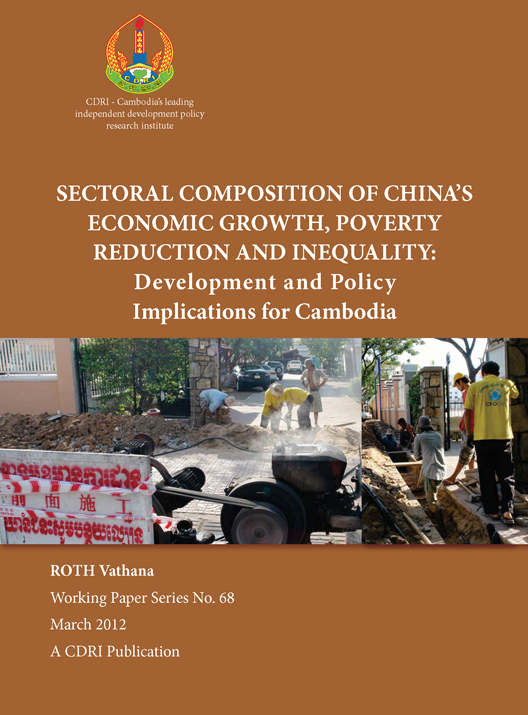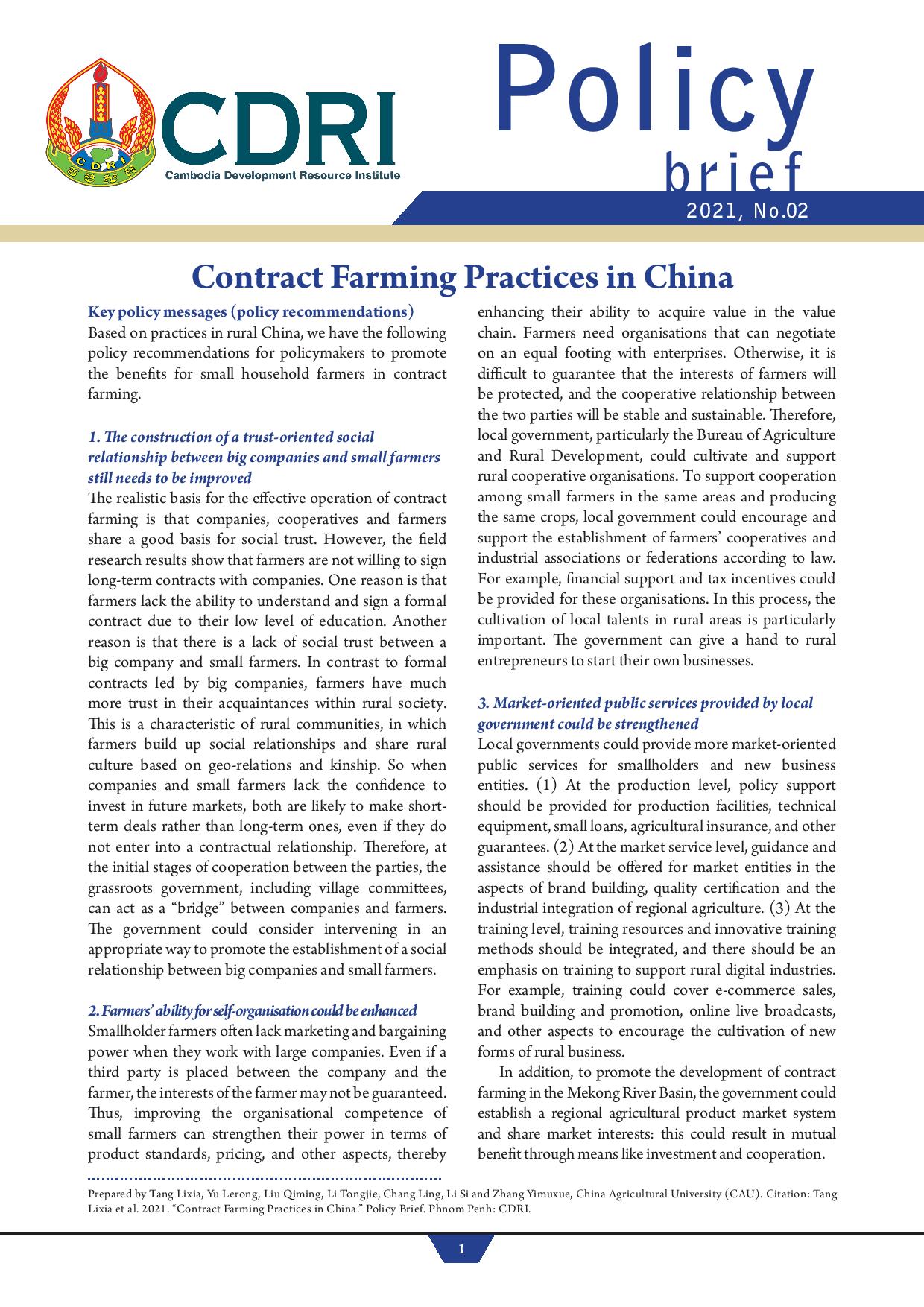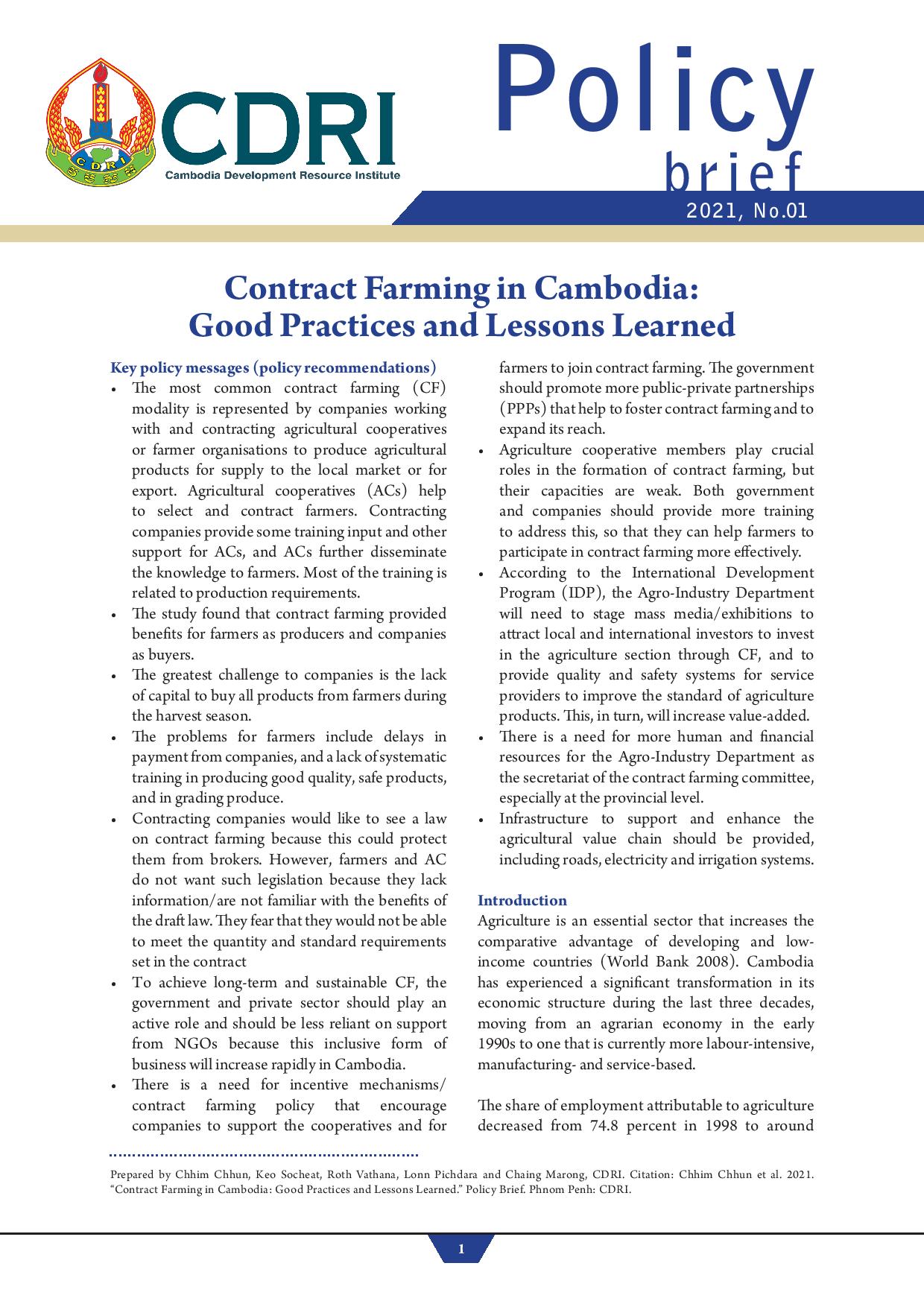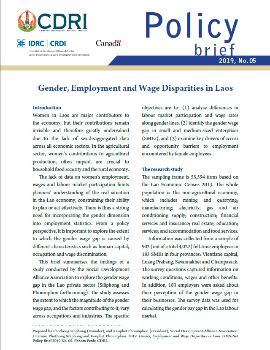
Sectoral Composition of China's Economic Growth, Poverty Reduction and Inequality: Development and Policy Implication for Cambodia
Keyword: China-Cambodia development cooperation, sectoral economic growth, poverty reduction strategies, industrial diversification, inclusive rural development
Abstract/Summary
This paper explores
China's economic transformation and its implications for Cambodia’s development
and poverty reduction strategies. It analyses the sectoral composition of
China's growth—particularly the roles of trade liberalization, industrial
diversification, and rural development—and how these have contributed to
poverty alleviation and reduced inequality. The study highlights China's government-led
approach, including targeted poverty reduction programs and strong
institutional frameworks, as key drivers of inclusive growth. Drawing lessons
for Cambodia, the paper emphasizes the importance of strengthening rural
infrastructure, enhancing agricultural productivity, and improving
institutional capacity for poverty reduction. It also discusses constraints
Cambodia faces in replicating China’s model, such as limited resources,
governance challenges, and low investment in education and research. The role
of China as a development partner through official development assistance and
foreign direct investment is examined, with recommendations for more inclusive
and sustainable cooperation. The paper concludes with policy implications for
Cambodia, advocating for a more coordinated, inclusive, and sectorally balanced
development strategy that leverages lessons from China’s experience.



